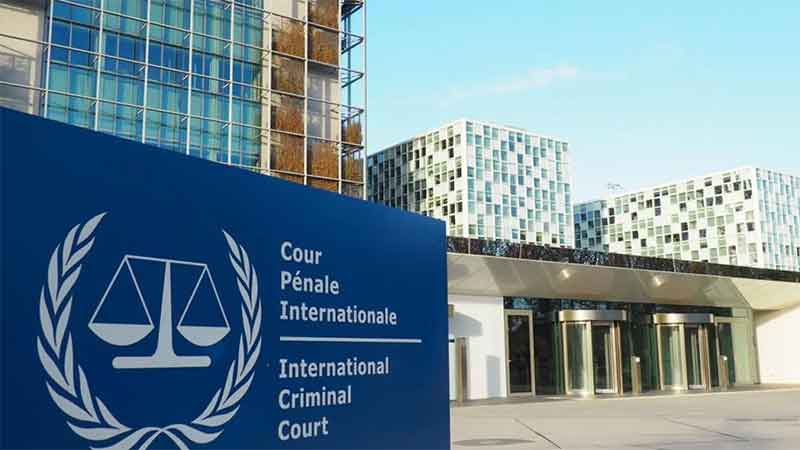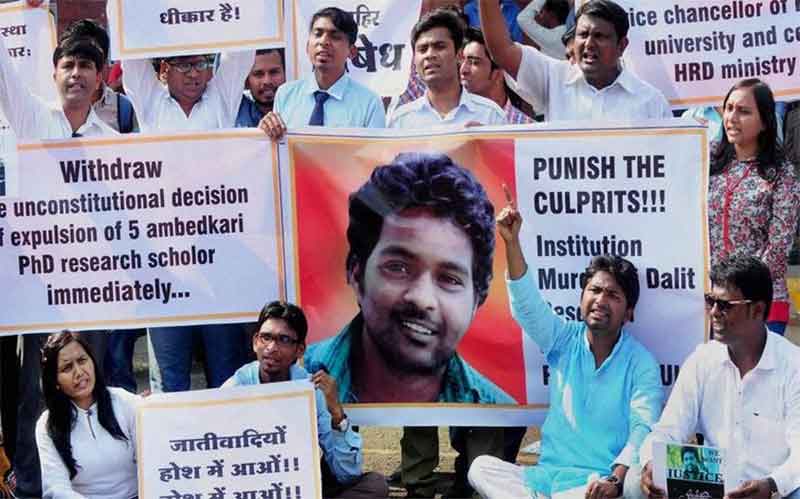
We’ve seen the horror movie over and over—cops murder people in cold blood, and then walk free almost every time. In the very few cases where one is put on trial, the killer cop gets off scot-free, or with a slap on the wrist, by claiming he feared for his own safety. The prosecutors—so skilled at sending Black and Latino people to prison—forget how to prosecute when it comes to the pigs, the armed enforcers whose job is to serve and protect the system of exploitation and oppression that rules over the people.
Almost four years after Laquan McDonald was murdered by police on a Chicago street, killer cop Jason Van Dyke is on trial for murder. A dashcam video—covered up for over a year by the police and city officials, all the way up to the mayor, before it was forced into the public eye—shows Van Dyke getting out of the squad car and, within six seconds, start firing 16 bullets at Laquan, who is walking away, hands at his sides. And after the opening week of the trial when the prosecutor, sure enough, forgot to prosecute, this past week Van Dyke’s lawyers brought up a parade of “witnesses” to try to paint Laquan as a youth with a “violent” history—obviously to argue the “case” that Van Dyke was justified in gunning down Laquan. Their “testimony” included things like an intake officer at a juvenile detention center saying that Laquan allegedly took a swing at him after becoming upset at being locked up and not being able to make a phone call. Laquan, of course, is not here to speak on his own behalf about these incidents—so there is only the word of these prison officers about what happened. But whatever the accuracy of their testimony—this kind of thing that no doubt happens a lot in youth prisons is supposed to be a cause for these youths to be executed by cops?!
The judge also ordered a nonprofit organization that offers recovery services for people with substance abuse and mental health problems to comply with a subpoena from Van Dyke’s lawyers and release Laquan’s records. The nonprofit had resisted the subpoena, saying that the records are protected under privacy laws. So again—the records of people being treated for recovery from substance abuse or for psychological treatments are supposed to be “evidence” that “justifies” police killing them?!
The judge ruled such “testimony” and “evidence” admissible because they were “Lynch material,” named after an Illinois Supreme Court ruling that allows defendants, like Van Dyke, claiming self-defense in a murder trial to bring up the victim’s alleged “aggressive and violent character,” even from years previously. NO! This character assassination to “justify” a modern-day lynching is no more legitimate than using a woman’s previous sexual history to attempt to “justify” rape. Van Dyke didn’t know anything about Laquan when he arrived on the scene, jumped out of the squad car, and started shooting almost immediately—except that he was a Black youth who was refusing police orders. In any case, nothing about Laquan’s past justifies a pig firing even a single bullet at him, let alone 16!
Outside the courtroom, sympathetic media portrayals of the killer cop—which began with substantial interviews by the Chicago Tribune and others—continues. This has included a major piece in the Chicago Sun Times in which Van Dyke’s Black brother-in-law claims Van Dyke is not racist and accounts of Van Dyke’s parish priest, who has been sitting in the courtroom with Van Dyke’s wife each day, speaking in support of the cop’s claims about the murder of Laquan.
At the same time, Van Dyke’s actual record of repeated violence against the people will not be brought into the courtroom, unless his lawyers bring him up to the witness stand (and perhaps not even then). In a 2015 article titled “Chicago Rarely Penalizes Officers for Complaints, Data Show,” the New York Times noted that Van Dyke “has had 18 civilian complaints filed against him, including allegations of using excessive force and racial slurs.” The investigative group Invisible Institute reported in an article on the Intercept website that after being the target of two complaints of use of excessive force in his first two years as a cop, Van Dyke’s “complaint rate skyrocketed. Citizens filed several allegations against him over the next five years. His use-of-force rate increased as well, from less than two per year to six in 2014.” TheRoot.com reports that according to a study in a forthcoming edition of the American Economic Journal, “Officer Van Dyke had accrued so many civilian complaints between 2002 and 2014 that he was in the top 3 percent of officers.” This is quite an “accomplishment” in a police department well-known for widespread brutality and racism. Van Dyke was exonerated in all the complaint cases—but that is just routine practice with the city’s police “review” board.
Among the other outrages from the killer cop’s defense team was the playing of an animated video of their re-creation of the scene—to supposedly refute the dashcam video by purporting to show that Laquan was moving toward Van Dyke when the officer started shooting. At parts in the animation, the figure supposedly representing Laquan is surrounded with a red outline to make him seem larger in an attempt to bolster Van Dyke’s claim that Laquan was “threatening” him. And the animation stops after the first five shots by Van Dyke—omitting the rest of the 16 shots that he fired into Laquan as he was laying on the ground.
A “pharmacology expert” was put on the stand to claim that one of the effects of the PCP that was detected in Laquan in the autopsy was to give him “superhuman strength”—another defense effort to make it look like Laquan was the “aggressor” and Van Dyke was only “defending” himself. This “expert” also claimed that even though Laquan was walking away from the officers toward a chain-link fence and an empty lot, “He’s still in the situation with a knife in his hand and disobeying orders from the police … still showing aggressive behavior and actions. I would describe that as violent rage behavior.” Again—walking away from police, with arms at your sides, toward an empty lot is “evidence” of “aggressive,” “violent” behavior that “justifies” being killed in cold blood by an armed enforcer of this system?!
The Larger Picture
The dredging up of claims about Laquan’s past is poisonous bullshit. But people should look at the larger picture behind what happened to Laquan. Nobody knows what exactly Laquan was doing or thinking the night his life was cut short. But what kind of a monstrous system creates a situation in which a whole generation of youth like Laquan are robbed of any decent future and are treated as less than human, just because the capitalist-imperialists who hold power no longer deem them worth exploiting—after generations upon generations that came before them were brutally exploited and oppressed, first as slaves, then sharecroppers, and last-hired-first-fired wage slaves in the factories?
What kind of a heartless system keeps cutting resources—like social workers who are trying to help these youths navigate a society that has been set up against them—when the reality is that under a radically different system, on a whole different economic and political foundation and with different set of social relations, all youth could flourish and grow? There is, in fact, an actual vision and plan for such a system—the Constitution for the New Socialist Republic in North America, authored by Bob Avakian (BA).
What kind of system trains police forces with a “mad-dog” mentality who look at oppressed youth as the “enemy” and brutalize, tase, and even shoot on sight when they encounter such youths acting in ways that may signal he or she is upset or mentally disturbed—with fellow cops who routinely lie and erect a wall of silence in order to protect their mad dogs—instead of reaching out to and helping such youth? As BA has insisted, if the police can’t handle such situations any differently than terrorizing and murdering people, they should get out of the way. Because under a radically different system, the people’s police would be willing to put their own lives on the line to resolve a situation than take the life of any human being—“That’s what you’re supposed to do if you’re actually trying to be a servant of the people.” (See BAsics 2:16.)
In order to bring into being that radically new, liberating system, we need an actual revolution to overthrow the system ruling over us now—a system that will go on murdering, by quick or slow death, youths like Laquan and go on doing all kinds of other crimes and other madness to people here and around the world until the system is brought to an end. And a crucial part of preparing the ground, preparing the people, and preparing the vanguard for that revolution is fighting the power and the outrages they commit, like the police murder of Laquan and, now, the attempted whitewash of that crime in the courts.
Originally published at revcom.us
Revolution newspaper/revcom.us, the voice of the Revolutionary Communist Party, provides the foundation, guideline, and organizational scaffolding for the whole process of carrying out our strategy for revolution. Through publishing works of Bob Avakian, and through many different articles, interviews, letters, graphics, and other features, Revolution enables people to really understand, and act to radically change, the world.














































